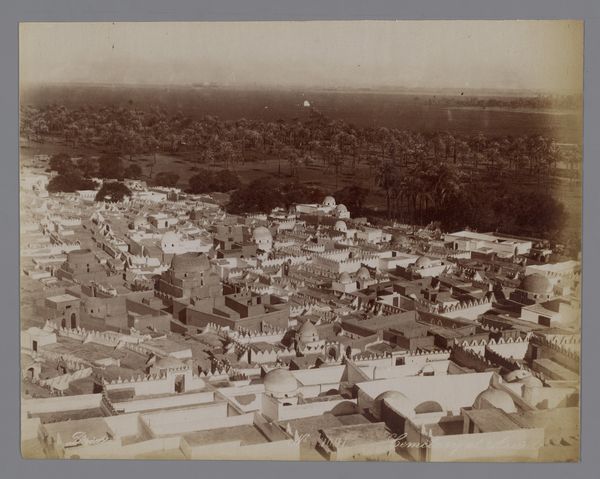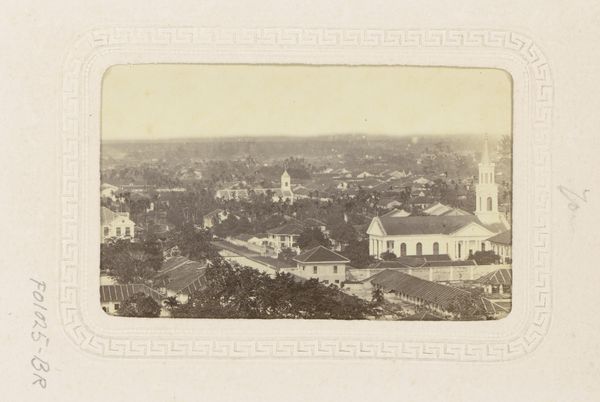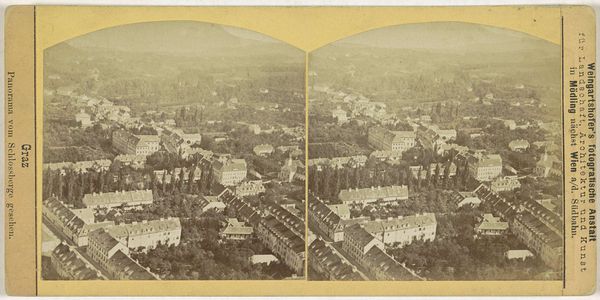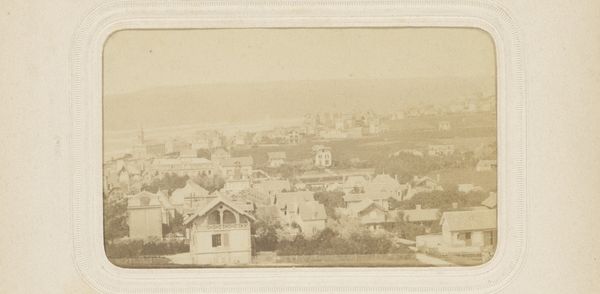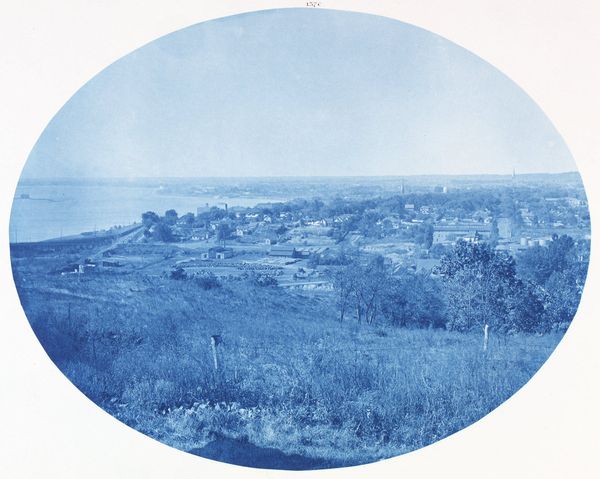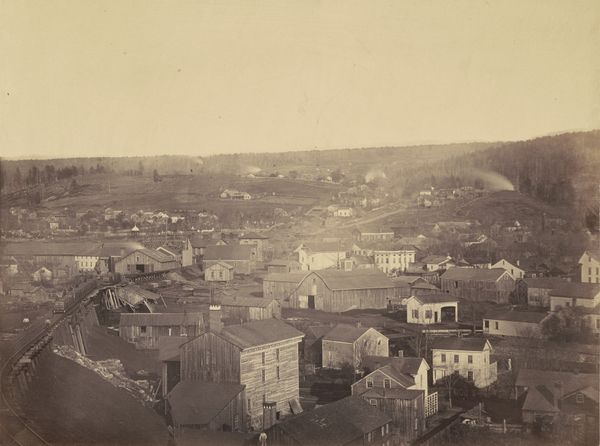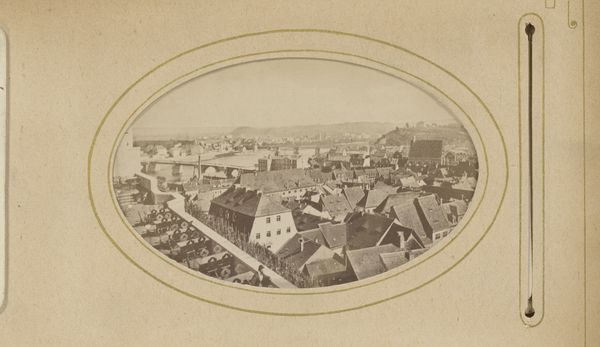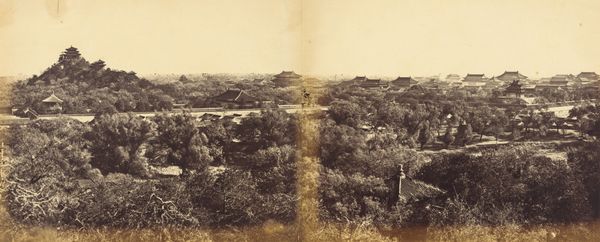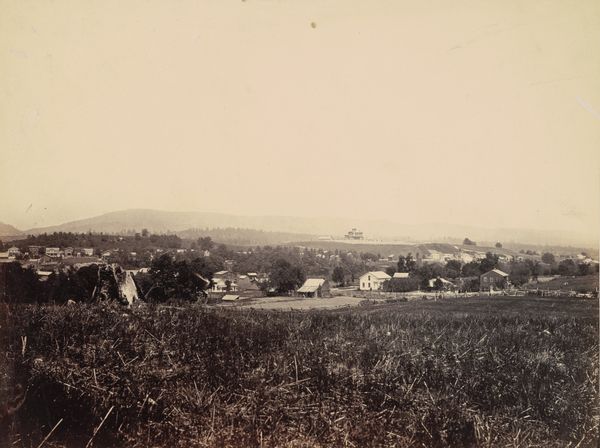
Looking Northwest from Westminster Street, Providence 1858 - 1860
0:00
0:00
photography, gelatin-silver-print
#
outdoor photograph
#
photography
#
gelatin-silver-print
#
monochrome photography
#
hudson-river-school
#
cityscape
#
realism
Dimensions: image: 21.8 × 27.2 cm (8 9/16 × 10 11/16 in.) mount: 32.4 × 37.8 cm (12 3/4 × 14 7/8 in.)
Copyright: National Gallery of Art: CC0 1.0
Editor: Francis Hacker's "Looking Northwest from Westminster Street, Providence" made between 1858 and 1860, presents a panoramic view in a gelatin-silver print. I’m immediately struck by how the density of buildings speaks to early urbanization. What does this cityscape communicate to you? Curator: It's crucial to consider the material conditions and processes behind this image. The gelatin-silver print itself is a product of industrial advancements, making photography more accessible and reproducible. But consider this— what labor went into the buildings represented? And what raw materials from where were utilized in their construction? Editor: So, beyond the aesthetic representation of a city, we should consider the entire system of production that made this scene possible. Curator: Exactly. This photograph is not just an artistic representation, but a document of the material culture of its time. How are space and labor being organized, commodified and controlled through these physical structures? The density you observed points to an increased labor pool concentrated in one place. Editor: That really shifts my perspective. I was focused on the overall image, but now I'm considering the individual human element within all these structures. Were photographs such as this displayed in commercial offices, even overseas, to attract even more investment and labor into growing communities like this one? Curator: A valid observation, as early photography had deep roots in colonial documentation, for scientific, commercial, and even government agencies, and this example reveals complex interdependencies. Think, too, about who *isn't* represented in the photograph. Where is the evidence of labor within it? What social classes benefit the most, from this representation? Editor: So this image, beyond its artistic value, really serves as a lens to examine the economic and social forces at play in 19th-century urban America. That's fascinating! Curator: Indeed. Analyzing its materials and context opens avenues for deeper interpretation and awareness of its complex historical moment.
Comments
No comments
Be the first to comment and join the conversation on the ultimate creative platform.
